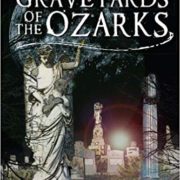Rebel with a Clause: Tales and Tips from a Roving Grammarian by Ellen Jovin
It seems to me that grammar is one of those things that people love, hate, love to hate, or hate to love. No one just sorta likes, nor just sorta dislikes, grammar. Author Ellen Jovin is no exception; she obviously loves grammar. So much so that she, along with her husband, Brandt, has traveled nearly all 50 of the United States (as well as farther afield) setting up the Grammar Table, a sort of makeshift reference desk, where Ellen answers grammar-related questions and Brandt films for an upcoming documentary.
It all started in 2018 when Ellen unfolded the first Grammar Table near her New York City apartment building, offering passersby a haven for expressing their grammar woes with an opportunity to ask questions in “any language,” as indicated on her sign. Yes, any language! Before schlepping a grammar table around the country, Ellen earned a BA in German studies from Harvard and an MA in comparative literature from UCLA, as well as studied twenty-five languages for fun. Impressive, to say the least.
Unlike more formal treatises on grammar, Ellen’s approach is conversational, thus making it a more comfortable read than other grammar-related titles. Arranged by topic, each of the 49 chapters within contains vignettes of real-world exchanges she’s had with strangers. Through dialog, and sometimes debate, we learn the fuss over the Oxford comma, the differences between commonly misused words, spelling, texting grammar, punctuation, and much, much more.
My favorite chapters are those covering the Oxford comma (of which I am a fan, though it’s more of a stylistic choice than not); those explaining the differences between commonly misused words, such as farther/further, affect/effect, and lie/lay; the one on appositives, particularly how clearly she explains non-restrictive versus restrictive; and the chapter entitled “The Great American Spacing War.”
Ellen also touches on the differences of dialect. West of the Mississippi, words like ‘cot’ and ‘caught’ tend to be pronounced the same, while east-coasters distinguish between the two when speaking. Others include ‘stalk’ and ‘stock,’ or the names ‘Don’ and ‘Dawn.’ According to Ellen, and Merriam-Webster, the latter is correct.
Like anything else, language changes over time, which readers are reminded of throughout the book. Take the so-called spacing war, for example. Many folks of a certain age (let’s say 40+) grew up learning to put two spaces at the end of each sentence. Nowadays, it’s more common to put only one, with two seeming outdated. Interestingly, most publications have always used only one, which makes me wonder why we ever used two to begin with. I fall on the one-space side of this argument.
I appreciate Ellen’s perspective on possessive apostrophes, though I don’t always adhere to it myself. When making a singular name that ends with ‘s’ possessive, such as Russ, she uses “s apostrophe s” rather than an apostrophe at the end of the name. These days, either is correct, but Ellen says, “I add ‘s to almost all possessive singular names, regardless of what they end in, It keeps my life simple and, in my mind, logical.” She further reasons that it’s because she, like all of us, actually says the extra syllable even when it’s not written, so it may as well be written. Fair points, indeed.
Admittedly, I’m often stumped by when to use ‘affect’ versus ‘effect.’ Sometimes, I avoid the situation altogether by using a different word. As it turns out, this is not uncommon.
Although I didn’t find anything particularly surprising in the “Labyrinthine Lists” chapter, I’m intrigued by Ellen’s suggestion that we in the US start writing our dates as written elsewhere. That is, day-month-year. Why? Because, as Ellen expertly points out, it would “tidy” up our sentences by eliminating the need for semicolon usage when listing dates. Okay!
For me, part of what makes the grammar table (i.e. this book) so successful is that it travels. It would be much less interesting if it was in the same place all the time, with Ellen answering the same sorts of questions asked by people who speak similarly. I enjoy the roving nature of it all.
Other aspects of Rebel with a Clause I enjoy (besides the punny name) are the illustrations and “Quizlets” at the end of each chapter. Both are fun ways to not just learn about grammar, but to interact with it while doing so.
If you love, or even hate to love, grammar, then this book is for you. I also recommend it for those who would either like to improve their grammar or have a refresher. But if you fall into the hate or love to hate grammar camps, then you might steer clear of this one.
As always, happy reading!
Reviewed by Jill Halbach, Post Art Library Director











